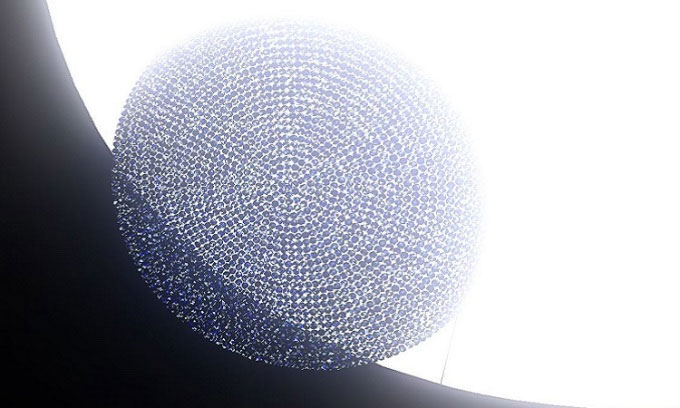The 'bubble raft' solution can help the Earth cool down
Architect Carlo Ratti's Space Bubbles research project, along with other Massachusetts Institute of Technology (MIT) researchers, proposes a "raft" of frozen bubbles at the Lagrange L1 point in the middle of the Earth. and the Sun. The bubbles are made from thin film materials and manufactured in space. When joined together, they will cover an area the size of Brazil (8.5 million square kilometers).

When combined, the bubbles will be as wide as Brazil.
Space Bubbles is a variation on the idea of cooling the Earth with a solar shield, which works by blocking some of the radiation from the star, thereby reducing the effects of global warming. The key difference, however, is that the solar shield in space poses no threat to Earth's biosphere. Projects deployed in the Earth's stratosphere come with this risk.
The MIT team emphasizes that Space Bubbles is designed to support efforts to mitigate current climate change trends. "Geoengineering is our only option," said Ratti, head of MIT's Senseable City lab. "However, the geotechnical proposals are all located on Earth, posing a huge risk to the ecosystem. The solution in space would be safer. For example, if it deflects 1.8% of the sun's rays. irradiating the Sun before reaching Earth, we can completely reverse global warming."
Another advantage of this type of solar panel is that the bubbles can deflate and recover from position. The sphere is made from a material such as silicon, which is transported into space in a fused form or as an ionic liquid reinforced with graphene. The MIT team has successfully conducted a preliminary experiment by inflating the sphere's crust under outer space conditions. They suggest that this could be one of the most efficient thin-film structures for deflecting solar radiation.
The Space Bubbles research project grew out of the ideas of scientist James Early, who first proposed deploying a radiation deflector at Lagrange point, and astronomer Roger Angel, who proposed the raft design. balloons. The interdisciplinary team hopes to demonstrate the feasibility of the project through further experiments and analysis. In addition to materials, the study will explore options for transporting materials from Earth, location and stability of bubble rafts, cost-effectiveness, maintenance practices, and impacts on climate and systems. Ecological.
- The earth is getting strange signals from bubble objects
- The mysterious bubble that appears in the center of the Milky Way galaxy is finally 'decoded'.
- Jellyfish turn dizzy when hitting the bubble circle
- Strategy to encircle prey with whale's bubble nets
- The fish bubble fever in China puts two species at risk of extinction
- Fire ants create rafts to escape flooding
- Screen on bubble soap
- Giant spider revives in England
- Trapping 'bubble' promises to solve the problem of plastic waste in the ocean
- Glue helps wound heal after surgery
- Should the Earth cool by imitating volcanic eruptions?
- America is about to cool the sky
 The most famous scientific failures in history
The most famous scientific failures in history Mysterious genius mechanic and the machine froze time
Mysterious genius mechanic and the machine froze time The son carries the 'bad gene' of genius Albert Einstein
The son carries the 'bad gene' of genius Albert Einstein Isaac Newton
Isaac Newton